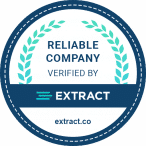In the digital age, websites have become a fundamental aspect of personal branding, business identity, and online presence. Platforms like Wix have democratized website creation, enabling individuals and businesses to design and launch websites without coding expertise. This guide delves into the intricacies of creating a website-building platform similar to Wix, outlining key features, technology stack, development process, challenges, and opportunities.
Table of Contents
Introduction to Website Building Platforms
- Understanding the Need for User-Friendly Website Creation Tools
- Role of Wix and Similar Platforms in Empowering Non-Developers
Key Features of a Wix-Like Website Building Platform
Drag-and-Drop Editor
- Intuitive Interface for Adding and Arranging Elements
- Enabling Users to Design Pages without Coding
Templates and Themes
- Offering a Diverse Selection of Pre-Designed Templates
- Allowing Customization to Suit Various Industries
Responsive Design
- Ensuring Websites Adapt to Different Screen Sizes
- Mobile-Friendly Layouts for Improved User Experience
Widgets and App Integrations
- Providing a Wide Range of Functional Widgets (Forms, Maps, Social Media)
- Integrating Third-Party Apps for Enhanced Features
E-commerce Functionality
- Enabling Online Stores with Product Listings, Payment Gateways, and Checkout
- Integration with Inventory Management and Order Processing
SEO Tools
- Offering Built-in SEO Optimization Features
- Assisting Users in Improving Search Engine Visibility
Hosting and Domain Integration
- Facilitating Domain Registration and Hosting Services
- Seamless Integration for Effortless Website Publishing
User Management and Collaboration
- Multi-User Access for Collaborative Website Building
- User Roles and Permissions for Effective Teamwork
Technology Stack for Building a Website Building Platform
Frontend Technologies
- HTML, CSS, JavaScript: Core Web Development Languages
- React, Vue.js: Popular Frontend Frameworks for Building Dynamic Interfaces
Backend Technologies
- Node.js, Python, Ruby: Backend Language Options
- Express.js, Django, Ruby on Rails: Backend Frameworks for Building APIs
Database Management
- MySQL, PostgreSQL, MongoDB: Database Options
- Storing User Data, Templates, and Settings
Cloud Infrastructure and Hosting
- AWS, Google Cloud, Microsoft Azure: Cloud Service Providers
- Scalable Infrastructure for Reliable Performance
Third-Party Integrations
- OAuth: User Authentication via Google, Facebook, etc.
- RESTful APIs for Integrating Third-Party Services
Steps in Building a Website Building Platform
Step 1: Ideation and Planning
- Defining Target Audience and User Personas
- Outlining Features and Creating a Roadmap
Step 2: Design and User Experience
- Crafting a User-Centric Design for the Platform
- Wireframing User Flows and UI Elements
Step 3: Frontend Development
- Building the Drag-and-Drop Editor and Interface
- Implementing Responsive Design Principles
Step 4: Backend Development
- Developing User Registration, Authentication, and Management
- Creating APIs for Template Management, Widgets, and E-commerce
Step 5: Template Marketplace
- Building a Library of Customizable Templates
- Allowing Users to Select and Edit Templates
Step 6: E-commerce Functionality
- Integrating Payment Gateways and Order Management
- Developing Product Catalogs and Checkout Processes
Step 7: SEO Optimization
- Implementing SEO Tools and Recommendations
- Enabling Users to Optimize Their Websites for Search Engines
Step 8: Hosting and Publishing
- Developing Domain Registration and Hosting Integration
- Enabling Users to Publish Websites with a Single Click
Step 9: User Collaboration
- Implementing Multi-User Access and Collaboration Features
- Enabling Users to Work Together on Website Projects
Step 10: Testing and Quality Assurance
- Rigorous Testing of Features and Functionality
- Addressing Bugs, Performance Issues, and Usability Testing
Challenges and Considerations in Building a Website Building Platform
Usability and User Experience
- Ensuring Intuitive Design for Non-Technical Users
- Offering Clear Instructions and Onboarding
Scalability and Performance
- Designing for High Traffic and Concurrent Users
- Load Balancing and Caching Strategies
Security and Data Privacy
- Implementing Robust Security Measures
- Safeguarding User Data and Payment Information
Maintenance and Updates
- Planning for Regular Updates and Bug Fixes
- Ensuring Platform Remains Current and Competitive
Benefits and Opportunities of a Wix-Like Website Building Platform
Empowering Creativity
- Enabling Individuals and Businesses to Create Unique Websites
Accessible Web Development
- Lowering the Barrier for Entry into Web Development
Business Opportunities
- Monetization through Subscription Plans and Premium Features
Educational Value
- Supporting Learning and Skill Development in Web Design
Real-Life Examples of Successful Website Building Platforms
Squarespace
- Offering User-Friendly Website Design and Hosting
Weebly
- Enabling Drag-and-Drop Website Creation
Shopify
- Focusing on E-commerce Website Building
Future Trends in Website Building Platform Development
Artificial Intelligence and Personalization
- AI-Powered Design Assistance and Customization
Voice and AR/VR Integration
- Integrating Voice Search and Augmented Reality Elements
Blockchain for Web Identity and Security
- Exploring Blockchain Solutions for Secure Website Identity
Conclusion
Developing a website building platform akin to Wix requires a deep understanding of user needs, design principles, and technology integration. By navigating the key features, technology stack, development process, challenges, and benefits, you can embark on a journey to create a platform that empowers users to build stunning websites without coding knowledge. As the digital landscape continues to evolve, website building platforms stand as a testament to the democratization of web development and the limitless possibilities of technological innovation.












